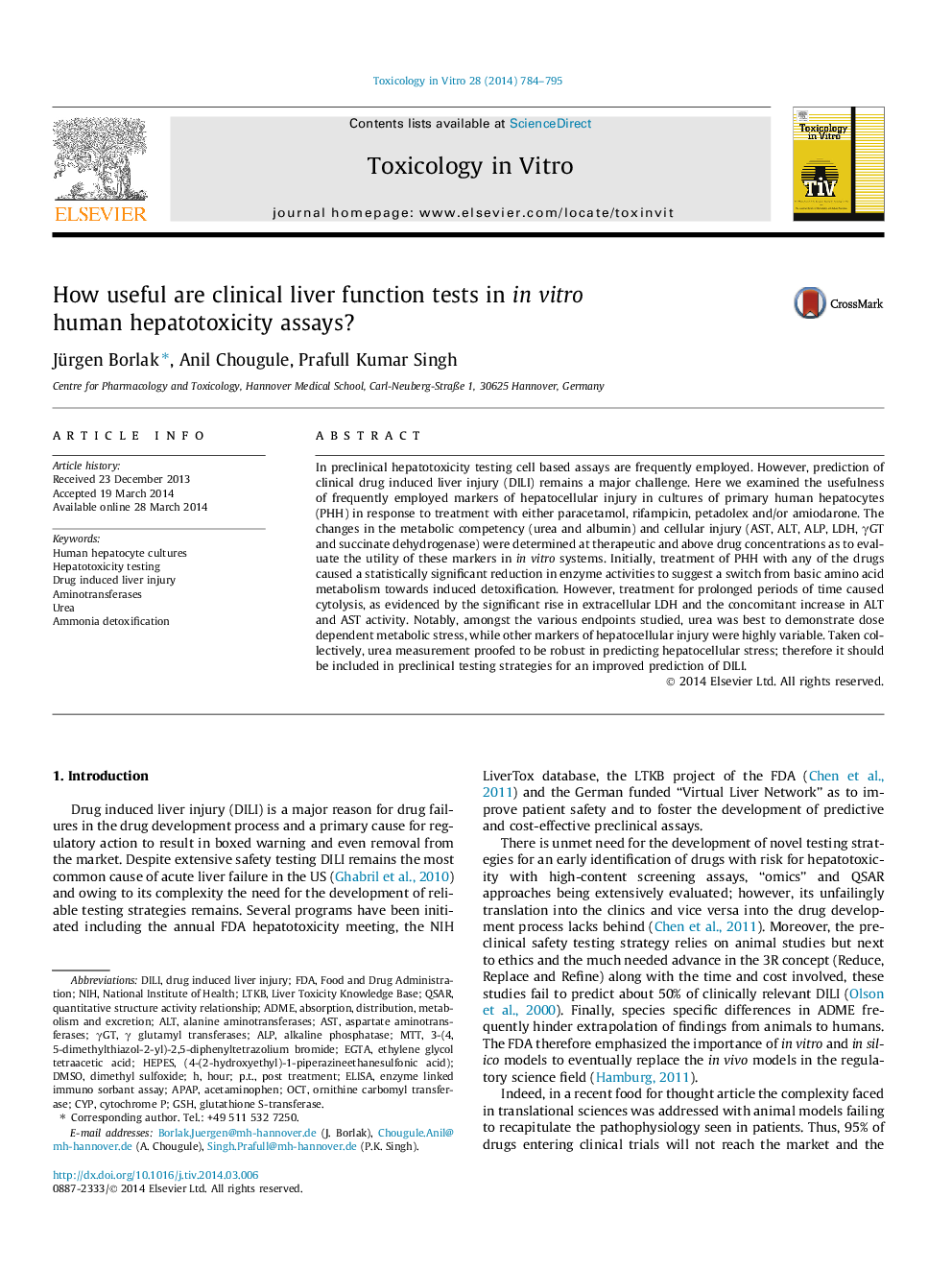| کد مقاله | کد نشریه | سال انتشار | مقاله انگلیسی | نسخه تمام متن |
|---|---|---|---|---|
| 5862271 | 1133775 | 2014 | 12 صفحه PDF | دانلود رایگان |
عنوان انگلیسی مقاله ISI
How useful are clinical liver function tests in in vitro human hepatotoxicity assays?
ترجمه فارسی عنوان
آزمایشات عملکرد کبدی بالینی در آزمایشات انسانی در معرض کبد انسانی چگونه مفید است؟
دانلود مقاله + سفارش ترجمه
دانلود مقاله ISI انگلیسی
رایگان برای ایرانیان
کلمات کلیدی
ALTFDAAmmonia detoxificationγGTNIHAPAPGSHEGTAADMECyPHEPES(4-(2-hydroxyethyl)-1-piperazineethanesulfonic acid) - (4- (2-hydroxyethyl) -1-piperazineethanesulfonic acid)3-(4,5-dimethylthiazol-2-yl)-2,5-diphenyltetrazolium bromide - 3- (4،5-dimethylthiazol-2-yl) -2،5-difenyltetrazolium bromideDMSO - DMSOMTT - MTTaspartate aminotransferases - آسپارتات آمینوترانسفرازAST - آسپارتات ترانس آمینازalanine aminotransferases - آلانین آمینوترانسفرازهاALP - آلکالن فسفاتازAlkaline phosphatase - آلکالین فسفاتاز یا فسفاتاز قلیاییAminotransferases - آمینوترانسفرازethylene glycol tetraacetic acid - اتیلن گلیکول تتراستیک اسیدAcetaminophen - استامینوفن Urea - اوره Oct - اکتبرQSAR - بزرگسال Post treatment - بعد از درمانELISA - تست الیزاabsorption, distribution, metabolism and excretion - جذب، توزیع، متابولیسم و دفعDILI - دیلیDimethyl sulfoxide - دیمتیل سولفواکسیدQuantitative Structure Activity Relationship - رابطه فعالیت ساختاری کمیFood and Drug Administration - سازمان غذا و داروHour - ساعتcytochrome P - سیتوکروم پDrug induced liver injury - مواد مخدر آسیب کبدی را ایجاد می کندNational Institute of Health - موسسه ملی بهداشتglutathione S-transferase - گلوتاتیون S-ترانسفراز
موضوعات مرتبط
علوم زیستی و بیوفناوری
علوم محیط زیست
بهداشت، سم شناسی و جهش زایی
چکیده انگلیسی
In preclinical hepatotoxicity testing cell based assays are frequently employed. However, prediction of clinical drug induced liver injury (DILI) remains a major challenge. Here we examined the usefulness of frequently employed markers of hepatocellular injury in cultures of primary human hepatocytes (PHH) in response to treatment with either paracetamol, rifampicin, petadolex and/or amiodarone. The changes in the metabolic competency (urea and albumin) and cellular injury (AST, ALT, ALP, LDH, γGT and succinate dehydrogenase) were determined at therapeutic and above drug concentrations as to evaluate the utility of these markers in in vitro systems. Initially, treatment of PHH with any of the drugs caused a statistically significant reduction in enzyme activities to suggest a switch from basic amino acid metabolism towards induced detoxification. However, treatment for prolonged periods of time caused cytolysis, as evidenced by the significant rise in extracellular LDH and the concomitant increase in ALT and AST activity. Notably, amongst the various endpoints studied, urea was best to demonstrate dose dependent metabolic stress, while other markers of hepatocellular injury were highly variable. Taken collectively, urea measurement proofed to be robust in predicting hepatocellular stress; therefore it should be included in preclinical testing strategies for an improved prediction of DILI.
ناشر
Database: Elsevier - ScienceDirect (ساینس دایرکت)
Journal: Toxicology in Vitro - Volume 28, Issue 5, August 2014, Pages 784-795
Journal: Toxicology in Vitro - Volume 28, Issue 5, August 2014, Pages 784-795
نویسندگان
Jürgen Borlak, Anil Chougule, Prafull Kumar Singh,
